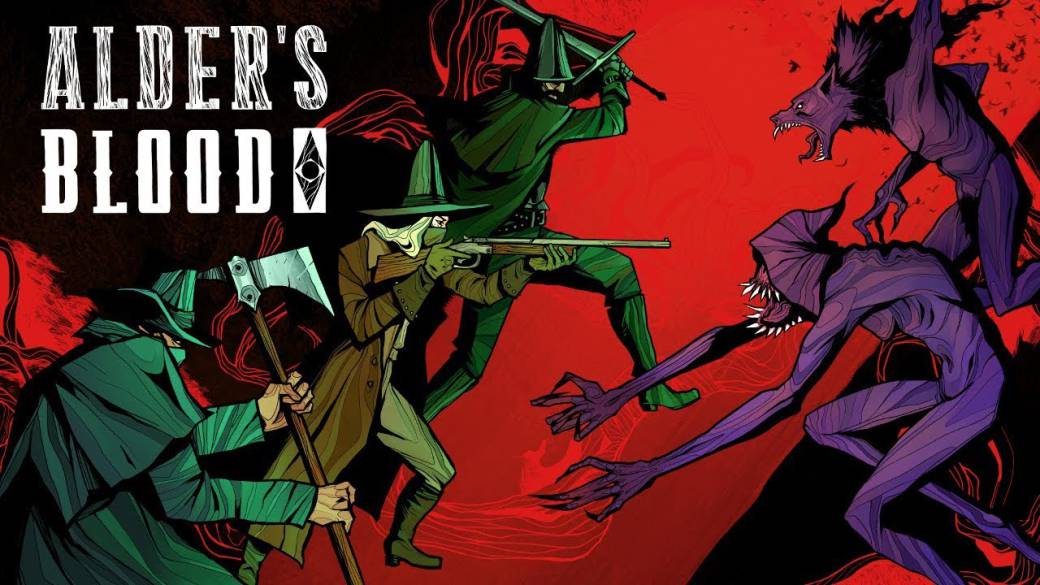
We explore a dark and soulless territory and battle its creatures in this tactical RPG inherited from XCOM and Bloodborne for PC and Nintendo Switch
Lovecraftian stories always end up revolving around how sanity becomes our last stronghold of defense when all else fails, and when steel can't take out monsters. In Alder’s Blood sanity is not a variable statistic, but the player is fully aware of it. Factors like burnout and punishment are embedded in the DNA of its gameplay.
The title of Shockworks Games is a tactical RPG that has a lot of Lovecraftian, but even more has a lot of other Lovecraftian games before it. A pastiche that often finds freshness, but is also affected by the repetitiveness and limitations of its proposal. After a short prologue-tutorial in which we control a character named Duke, the map of the region opens and we go into the game as such.

The first surprising thing about Alder’s Blood is its emphasis on narrative, there is much to read here. The dialogues we have with the numerous characters is a big part of it, but there is also lore in the description of the places we go to or behind the mechanics we carry out. The story is followed with moderate interest, it is dense enough to create a feeling of a universe with a crumb, but its texts are not heavy enough to slow down a rhythm that is generally quite agile.
What there is is a lot of coming and going and a lot of feeling of running. This is not a problem at first because we do not travel the sites "physically", we move around the map through an interface and the places we visit are represented by static images, but also, we will trace the same routes often and we will be giving lunges between the same interlocutors. In the meantime, a plot will develop in crescendo that has to do of course with the imminent darkness that is approaching. Visions and dark dreams are one more piece on a board already full of monsters and infernal creatures that roam freely in this impoverished territory. In addition to this, the story also spawns conspiracies between the game's four factions, in which our level of loyalty will also have playable implications.

But it is not just reading how we will obviously spend our time. Much of the playable Alder's Blood experience involves managing the state of our party, keeping them supplied with food, with the HP level at the top, the best equipped we can and with the tasks that are best assigned to help the camp. . It is also important to keep them as good hunters, because when they face the many dangers they will need it.
The numerous missions are where the true action of the game happens, until then everything is preparatory. Anywhere on the map we can camp and rest, and it is recommended to do it often. At the camp we manage our band of hunters, level them up or equip them, let them rest to heal their wounds, or assign them to food-hunting or crafting tasks. Having food is necessary for hunters not to starve and for traveling, and crafting allows us to get new weapons and talismans useful for combat. With experience we level up hunters, and we can assign passives that improve certain statistics or abilities. This allows us to make decisions like specializing certain hunters in specific tasks. Perhaps one of them is not a good fighter, but he is the best food collector we have.
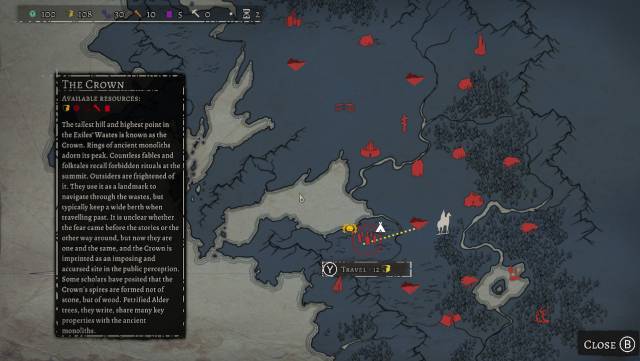
Something there is no escape from, no matter how well we manage this branch of the game, is corruption. Corruption is an invisible enemy, a statistic within each hunter that as time goes by tells us how close he is to dying. It is so implemented in the gameplay that there is a specific mechanic to sacrifice hunters and, in return, we gain resources to make it easier for us to incorporate new ones to replace them in the band.
What we can fight against is with the different creatures that inhabit these lands, although perhaps it should not be our priority. Alder’s Blood's quest system is quite straightforward, as we move around the map and move forward in the story we unlock new quests to face, some are main and others are secondary and optional, although they really have very similar formats.

When it comes to taking action, we enter a tactical RPG through squares where positioning and managing actions intelligently are essential to succeed. From its very prologue, when we are being taught the mechanics, stealth is discovered as the main weapon of the title. Our character is always at a disadvantage against enemy creatures, and even when we do missions with more than one hunter, being more in number does not guarantee an immediate victory. The turn system in which the missions of the game are strictly governed has two fundamental pillars: stamina and detection.
Detection depends on the vision and smell of enemies. Ideally, we always move from cover to cover to avoid being exposed at the end of our turn, but that's not enough. If any of the squares that we step on during our movement action enters the line of sight of an enemy, it will detect us, our turn will stop momentarily and after alerting their companions we will have one last reaction movement, either to flee or to carry out an attack desperate. Similarly, the wind leaves a trace of our sense of smell that is displayed on the screen similar to how we would see a cone of vision, if in an action of movement the enemy comes into contact with that trace, it will detect us immediately.
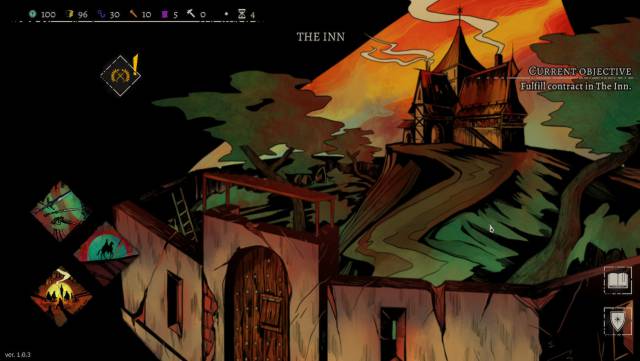
Stamina, on the other hand, determines the number of actions we can do in one shift. Each action has a specific cost and we must use this to our advantage to maximize the actions that we can do efficiently. Some like moving around have a small cost but others like reloading a weapon should only be used at specific times when we have done everything we want to do. The penalty for spending the stamina is very high, our hunter falls immediately to the ground, his turn ends wherever he is and he also loses the next turn. Losing a turn in Alder’s Blood, and more after being detected means certain death, so managing the stamina in this game is crucial if we do not want to have to retry the mission completely.
Alder’s Blood becomes very punitive. Despite the fact that these systems are visually reflected on the screen at all times, there is much that is beyond our control at the moment of the game. The range of vision of our character is rather short, and it often happens that we detect enemies that we did not even know were there initially. The movement pattern of the enemies is irregular, which never allows us to know how close we can get to certain enemies. In a game where every move has to be measured so as not to fail, there are certain factors more random than we would like, such as the direction of the wind, which can change at any time, revealing our position before the enemy. It should be noted at this time that death, when it comes to us, is permanent for the hunter, or at least it is under certain conditions. With the Game Over screen we can restart the mission and try again, but if we leave a failed mission because we want to rethink our strategy, the dead hunter will be lost forever.
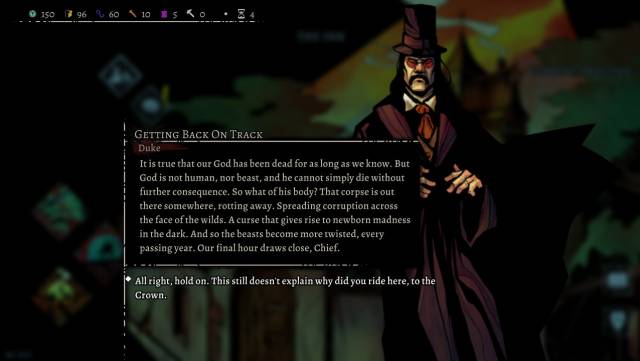
The last resort then is to fight, and it is because our hunter can easily die with a couple of well-taken punches from… well, almost any enemy actually. So when we approach combat, the ideal is to do it in sneak ambushes, we go in and out. If we attack from behind with the right weapon we can knock down the enemy and, like us, make them lose a turn. If we finish them off, we will make them disappear. We must bear in mind that not all enemies respond well to this tactic, there are tougher enemies that will resist our stabs in the back and will counter us, leaving us vulnerable.
It's not all about stabbing in the back, the game also has a good repertoire of weaponry for more open confrontations. Our hunters can carry two weapons to alternate at any time. We have firearms and melee weapons. The fire ones allow us to fight remotely effectively, but they make a lot of noise and when recharging we spend almost an entire turn. Melee weapons such as daggers or swords, especially second ones, allow us to stand up to beasts when they are up close.
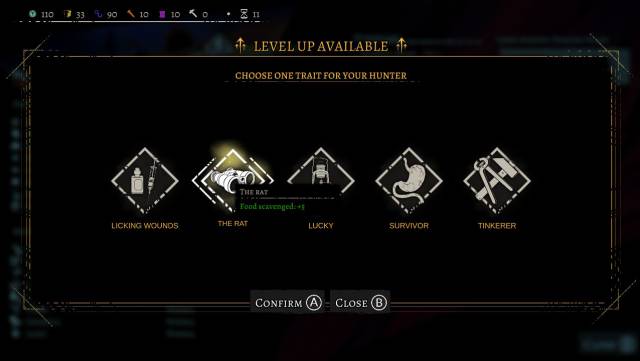
The rest of our equipment is equally important, talismans can be crafted in the camp and improve our passives or our general statistics, while the objects are very varied and cover from healing potions to secondary weapons such as throwing knives. Pebbles are, finally, the ideal distraction for when we have to go back to stealth, they create a sound area that will attract any enemy and clear the way for us.
Aside from fighting, Alder’s Blood refreshes its formula with different types of missions, some may simply move us around the stage avoiding enemies, and others may include getting certain items, or following certain clues on stage.
Despite all this, the game loop ends up residing in the two main pillars: stealth and the management of our band of hunters. Alder's Blood channels all of its narrative and mechanics to generate this feeling of weariness in a hostile world, sometimes for good, creating an evocative world with interesting plot points, but often for bad, like a sometimes erratic stealth system, and a punitive philosophy that does not forgive mistakes, even when it does not depend entirely on us.
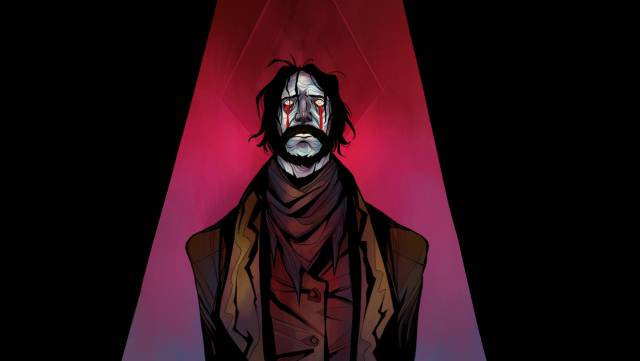
Code provided for the Nintendo Switch version.
CONCLUSION
Alder's Blood is a tactical RPG that aims high with its referents, mixing playable elements of titles like XCOM or visual and conceptual of others like Bloodborne, but coming out on the other side as a title that does not reach one hundred percent in any of its out of the way. Its Lovecraftian aesthetic is well-resolved, with dark 2D art saturated with angular shapes and an attractive creature design that seems hand-drawn. Its story features interesting characters and elevates the missions it contextualizes. And its gameplay has solid foundations, but also a series of mechanics that limit it and prevent it from fully shining. If the intention is to feel like a small piece of a hostile world that oppresses us, that has been achieved, but not always for the right reasons.
THE BEST
- Enter through the eyes, has a strong and attractive artistic direction
- Its high difficulty will be an attractive challenge for many players
- The story is followed with interest, and properly contextualizes the missions.
WORST
- The Nintendo Switch version has been adapted without much care, it is difficult to read the texts on the portable screen and controlling the cursor becomes uncomfortable
- Many stealth sections feel unfair, with enemies popping out of nowhere and erratic AIs
- The strategic component lacks depth
Right
It is not the latest or most original, nor does it have the best execution, but it can be fun if you like the genre. Good, but upgradeable.
